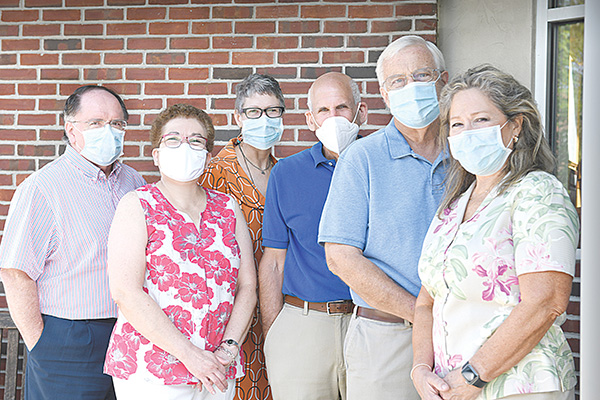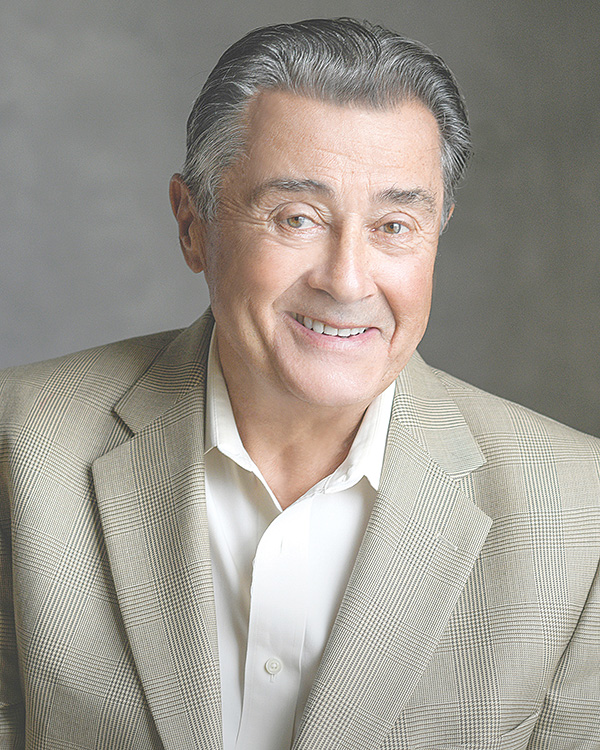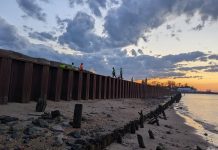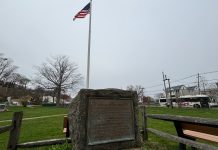
Photo courtesy Danny Sanchez
By Eileen Moon
RED BANK – On Wednesday, July 29, the Parker Family Health Center will mark its 20th year of providing cost-free health care to residents without adequate income or health insurance.
Over the past two decades, the clinic at 211 Shrewsbury Ave. has handled more than 160,000 patient visits, treating families and individuals who depend on the center for everything from school physicals to chronic care for high blood pressure and diabetes.
To Gene Cheslock, M.D., the retired oncologist who led the effort to establish the free clinic in the late 1990s, the success of the center ranks as one of the crowning achievements of his life.
“Aside from my family, it is number one,” he said. “Parker is probably the most rewarding effort that I’ve ever been involved in.”
But he is quick to point out, the clinic wouldn’t exist without the donors and volunteers, staff and board members who make it possible.
“You can have a crazy idea, but it doesn’t work if people don’t buy into it and support it,” Cheslock said.
The Parker Center now occupies a light-filled building whose soaring design reflects the aspirations of the people who made its existence possible. Among its most well-known supporters are Jon and Dorothea Bon Jovi, who have worked hard to help the clinic succeed.
In the spring of 2001, the couple hosted a cocktail party for founding donors that raised $650,000. The money raised that evening enabled the center to build its permanent facility mortgage-free.
The Bon Jovis had one stipulation: That the design of the building be inspirational rather than a concrete box.
“It really is the center of the community,” Cheslock said.
At the start of 2020, supporters of the Parker Center anticipated marking its 20th year with a golf outing and a gala celebration.
“But who could have predicted a pandemic?” said Suzy Dyer, who joined the Parker Center in December as its first executive director. As the pandemic progressed, Dyer said, “We did a quick pivot,” bringing office appointments online via a telehealth portal and picking up three refurbished cellphones so that patients, physicians and interpreters could communicate while social distancing.
“Patients were really concerned and scared and wanted to be able to talk with someone they trust. And who better than your health care provider?” Dyer said.
While the events of 2020 remain challenging, staff and volunteers take comfort in a track record that demonstrates how obstacles can be overcome and how those who share a common mission can work miracles – in others’ lives and in their own.
In the late 1990s, after 35 years in practice, Cheslock was beginning to feel a little burned out. The idea of founding a free clinic had been in the back of his mind for many years. He began to give it some serious thought.
In South Carolina, Jack McConnell, a retired physician, had established a free clinic called Volunteers in Medicine. Cheslock wondered if the idea could work in Red Bank.
Cheslock mentioned his idea to a colleague at Riverview Medical Center, Timothy Sullivan, M.D., who was then vice president for Medical Affairs. An ear, nose and throat surgeon, Sullivan had recently returned from the medical mission to Guatemala he led every other year.

“Doctors would tell me, ‘Gee, this is how medicine used to be,’ ” Sullivan said. “It was more about the joy of helping people and less about business.” He thought that having a free clinic staffed by volunteers could offer the same rewards closer to home.
A colleague of theirs, James W. Parker Jr., M.D., had been practicing on the West Side of Red Bank, where many residents struggled to make ends meet, for more than 50 years. Like his father before him, Parker Jr. was a towering figure in the black community; a caring physician whose dedication to his patients was legendary.
When Cheslock initially talked with Parker about the possibility of a free clinic, the elderly doctor was not enthused. Eventually, though, after speaking with Jack McConnell, he warmed to the idea.
Donald A. Warner, then superintendent of Red Bank Regional High School, went door-to-door on the West Side asking residents if they had health insurance. Nearly 40 percent said they did not. With the need established, Cheslock had faith that he could find enough generous donors to respond to it.
And after paying a visit to Red Bank, McConnell agreed.
“You can do it here,” he told Cheslock. “Name the clinic after someone everybody knows,” he urged.
“That was a no-brainer,” Cheslock said. “Everybody knew Jim.”
He next approached then-mayor of Red Bank Edward J. McKenna Jr.
“I thought it was an awesome idea,” McKenna recalled. “I was 1,000 percent behind it.”
At McKenna’s suggestion, Cheslock contacted Richard Barnhart of Pennrose Development, who’d recently converted River Street School to a senior apartment complex. Barnhart offered to donate a small piece of land on Shrewsbury Avenue provided the clinic handled the demolition of an old building on the site. Cheslock enlisted a friend who owned a demolition company to donate his services. Jay Patock Construction then agreed to outfit a small trailer for the clinic’s use.
Meanwhile, Sullivan worked with medical providers to secure commitments for lab work, radiology and other medical services for clinic patients at no cost.
Mary Nicosia heard about plans for the Parker Center while working for a similar clinic in Arizona. A nurse practitioner and the daughter of former Red Bank Mayor Ben Nicosia, she was interviewed by the newly assembled board and soon signed on as the center’s first clinical director.
“Twenty years have flown by,” she said. “We’re still here. We haven’t stopped. We keep going. We keep blazing trails. We’re still trying to serve.”
“On behalf of Lunch Break and those we serve we congratulate the Parker Center for providing quality and caring medical services to the uninsured for 20 years,” said Gwendolyn Love, executive director of Lunch Break. “We have enjoyed a great partnership with Parker over the years to ensure the communities’ essential needs are received. God Bless the selfless work of their staff and volunteer doctors who have touched the lives of so many throughout the years.”
“The patients are very grateful,” said Sonia Guandique, who joined the Parker Family Health Center as a volunteer interpreter and now is the center’s referral coordinator.
“Sometimes they bring us tamales to thank us, sometimes they bring us bread,” she said. “Sometimes they just say ‘thank you.’ That’s worth all the gold in the world.”
The article originally appeared in the July 23 – 29, 2020 print edition of The Two River Times.














